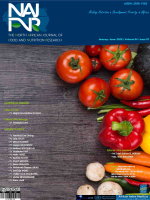Main Article Content
Statistical study of the relationship between hyperuricemia, dyslipidemia and type 2 diabetes in rural population of Tizi-Ouzou, Algeria
Abstract
Aim: The main objective of our work was to assess the relationship between type 2 diabetes, hyperuricemia and dyslipidemia in the population of Tizi-Ouzou. By evaluating the relationship between hyperuricemia and some blood lipid parameters, we thus establish, in type 2 diabetes, the correlation between uremia and these lipid parameters. Subjects and methods:The survey was carried out by means of an individual questionnaire. We excluded from our study pregnant women, patients with cancer, patients with end-stage renal disease and subjects who did not respond to the questionnaire. Results:Serum uric acid level increased with age (p = 0.025). Hyperuricemia was associated with heart disease (p = 0.0007). All patients with gout presented anelevated serum uric acid (p = 0.000001). Dyslipidemia wasmore common in patients with elevated serum uric acid levels (p = 0.0008). Triglyceridemia was significantly associated with hyperuricemia (p = 0.025). The relationship between type 2 diabetes and glomerular filtration rate was not significant, while the latter was decreased in patients with elevated serum uric acid levels (p = 0.0001). In, stratified analysis, age was effect modifier, the age-dependent results make us understand that resistance to insulin constitutes a significant factor of hyperuricemia. Conclusion:The association between hyperuricemia and dyslipidemia in type 2 diabetes emphasizes that insulin resistance acts on both lipid parameters and uricemia. A diet correcting dyslipidemia may also correct the uricemia.







